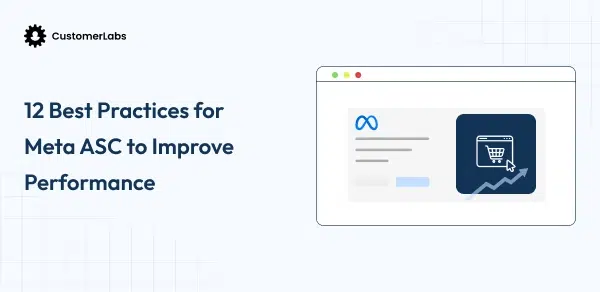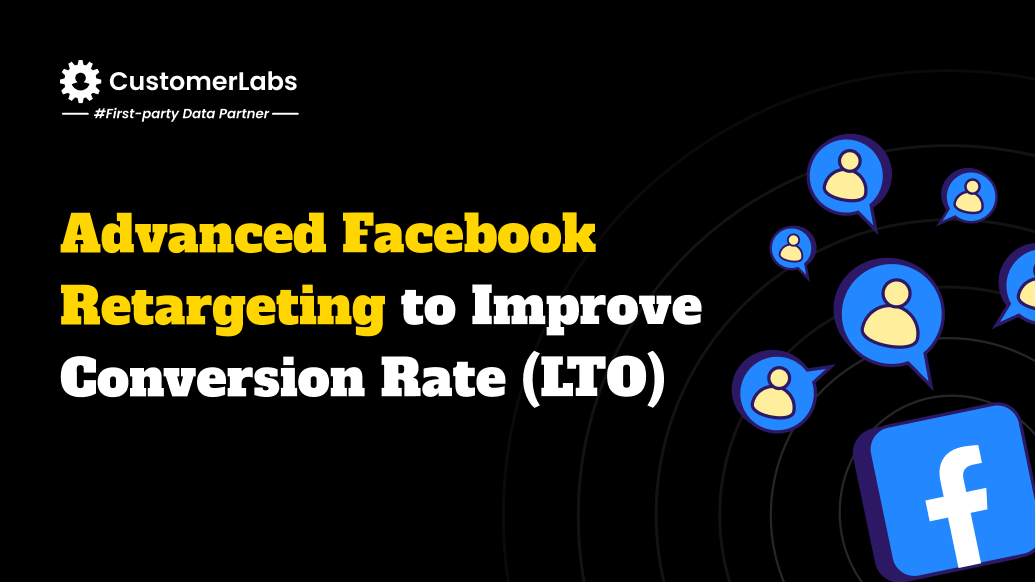Many marketers assume that optimizing Meta campaigns for “Purchase NC” is the key to bringing in more new customers. However, our analysis reveals a different story. Solely focusing on new customer events like “Purchase NC” can actually be detrimental to your acquisition efforts. This article argues why this is the case and provides a roadmap to build a more effective strategy for acquiring new customers through Meta campaigns.
Why “Purchase NC” conversion event campaigns don’t work
The fundamental problem is that the same features used to predict new customer behavior often overlap with those used to predict returning customer behavior. This overlap creates challenges for Facebook’s algorithm, leading to inefficient targeting and a potential bias towards returning customers.
- Feature Overlap: Take, for instance, the feature “browsing history of electronics.” This feature could apply to both a first-time visitor interested in a new TV and a returning customer looking for a replacement laptop. The algorithm struggles to distinguish between these scenarios, leading to mixed targeting and wasted ad spending.
- Insufficient Data Segmentation: If you don’t properly segment your data, the algorithm can’t differentiate between new and existing customers. Engaged customers are easier to convert, and without clear segmentation, your campaigns might prioritize them, hindering your new customer acquisition goals.
- Algorithm Bias: Facebook’s algorithm prioritizes maximizing overall conversions, not specifically targeting new customers. This inherent bias means your ads may favor returning customers who have a higher likelihood of converting, even if your goal is to acquire new customers.
The algorithm’s optimization process: It’s not magic
Deeper analysis: Why this approach won’t work
Imagine the ad algorithm as a highly intelligent but somewhat clueless butler. You tell it, “Fetch me new customers!” and it nods enthusiastically, but then proceeds to bring you anyone who looks like they might buy something – new or old.
The algorithm optimizes for the probability of a user purchasing given certain features. This probability is calculated as follows:
Feature overlap formula time:
In plain English, the Facebook/Meta algorithm tries to maximize the chances of a new customer purchase based on their features. However, because features like “browsing history of electronics” or “adding items to cart” can apply to both new and old customers, the algorithm ends up targeting a mixed bag.
Probability distribution without overlap between new and returning customers
Probability overlap between new and returning customers
This graph demonstrates the overlap in probability distributions for features associated with new (blue) and returning customers (green). The gray shaded area indicates the overlap, making it challenging for the algorithm to distinguish between the two groups. This realistic scenario highlights the difficulty in targeting new customers effectively, as similar features can apply to both new and returning customers, leading to mixed targeting.
Conditional probability: A double-edged sword
Here’s the kicker: the meta algorithm training data includes both new and returning customers. While the algorithm is sophisticated and can adapt to some degree, if your dataset is heavily skewed towards returning customers, the model might struggle to identify the specific patterns that characterize new customers. It’s like trying to find a unique signal in a noisy environment, where the noise from returning customer data drowns out the signal from new customer behavior.
However, even with a balanced dataset, the algorithm still relies on conditional probability, which can lead to challenges in targeting new customers.
Let’s break it down:
- Features and Events: The algorithm uses various features to identify patterns and predict user behavior. For example, features like browsing history, add-to-cart actions, and demographics can influence how likely a user is to make a purchase. These features can be associated with specific events, like “new customer purchase.”
- Overlap and Ambiguity: The problem is that many features can be associated with multiple events. For instance, a user browsing electronics might be both a new customer interested in a new TV and a returning customer looking for accessories. The algorithm might not be able to definitively determine which event is most likely based on the browsing history feature alone.
Conditional probability bias
The algorithm tries to predict the probability of an event happening given certain features. However, because those features might be associated with different events, the algorithm might not always make the correct prediction. It might be more likely to predict a “returning customer purchase” event, even if the user is a new customer.
Explanation:
- Conditional Probability Bias: The red line shows how the algorithm might misinterpret the features associated with both new and returning customers. Even though the algorithm is designed to optimize for new customer purchases, the significant overlap in features (gray area) means that the algorithm often ends up favoring returning customers.
- Algorithmic Tendency: Due to higher engagement rates (the green line peaking higher and more frequently than the blue line), the algorithm tends to assign a higher probability to returning customers. This results in the biased probability (red line) being closer to the green line than the blue line.
- Impact on Targeting: The bias indicated by the red line means that ads intended for new customers might be shown more frequently to returning customers, reducing the efficiency of new customer acquisition campaigns.
The analogy of a “Traffic Light”
Think of a traffic light. Green means “go,” but what if there’s a construction crew working on the road ahead? Green might also mean “slow down and proceed with caution.”
Similarly, the “new customer purchase” event can be triggered by a variety of user actions that is similar to the “returning customer purchase”. These actions may also be associated with other events, making it difficult for the algorithm to pinpoint the specific event you’re trying to target.
Why this matters for new customer events
Let’s say you create a new customer event for “electronics purchase.” While this event is intended to target only new customers, the algorithm might still show ads to returning customers who have previously purchased electronics. This happens because:
- Features Overlap: The features associated with an “electronics purchase” (browsing history, adding items to cart) are likely to overlap with returning customers who have bought electronics in the past.
- Conditional Probability Bias: The algorithm might be biased towards the more common pattern – returning customers buying electronics – and misinterpret the “electronics purchase” event as a signal for both new and returning customers.
Example: Imagine an online retailer aiming to target new customers interested in buying electronics. Let’s say the probability of a purchase given a user clicks on an ad P(purchase ∣click)P(purchase | click)P(purchase ∣click) is 30% for new customers and 25% for returning customers. While there is a slight difference, this small gap makes it challenging for the algorithm to reliably differentiate between the two groups, leading to mixed targeting.
Problem with nCAC Calculation
You might have noticed that a few calculations explain how to calculate the nCAC inside Meta by doing proportional allocation, which is flawed. Well, you can use it to get a picture, but it’s not the right way to do it.
Proportional allocation: Reasoning and calculation
Given:
- Total Amount Spent: $10,000 USD
- New Customers Acquired: 200
- Repeat Customers Acquired: 10
The proportion of New Customers:
Proportion of New Customers=200/200+10=200/210≈0.952
Allocated Cost for New Customers:
Allocated Cost for New Customers=10,000 USD×0.952=9,520 USD
Calculation of nCAC:
nCAC=9520/ USD 200 new customers=47.60 USD per new customer
Why proportional allocation can make sense, but it’s not the true picture:
- Simplification: It provides a simplified method to estimate costs when detailed data is unavailable.
- Fair Distribution: It assumes that marketing efforts are uniformly effective across new and repeat customers, which may be reasonable in the absence of specific targeting information.
Limitations of proportional allocation
- Assumption-Dependent: The accuracy of this method depends on the assumption that marketing efforts are equally effective for new and repeat customers, which might not always be true.
- Potential Inaccuracy: If certain campaigns were specifically targeted at new customers or repeat customers, the proportional allocation could misrepresent the actual nCAC.
The bottom line
Creating a new customer event alone won’t magically solve the problem of targeting new customers effectively in Meta campaigns. You need a more comprehensive approach that addresses the underlying issues of feature overlap, conditional probability bias, and data skewness.
Feature engineering: Crafting the right recipe
To guide the algorithm properly, you need features that clearly differentiate new customers. These features should be used to create precise audience segments within your First Party Data Ops (1PD Ops), which can then be imported into Facebook Ads Manager for targeted campaigns:
- First-time Site Visits: Track whether a user is visiting your site for the first time using analytics tools. Create a custom audience in your 1PD Ops based on this data and sync it with Facebook Ads Manager to target new visitors specifically.
- No Prior Purchase History: Ensure the feature set clearly indicates users with no previous purchase history. Use this information to build a custom audience focused on new customer acquisition.
These features help the algorithm focus on new customer acquisition by targeting the right segments.
How to structure your campaigns for better results
Here’s how to fix these issues and make your campaigns work better:
- Multi-Faceted Audience Segmentation: Break your audiences down by behavior, interests, and engagement levels. Run separate campaigns for engaged and new audiences but set different goals for each.
- Use Exclusion Lists: Make sure your ads targeting new customers don’t get shown to existing customers by using exclusion lists. This keeps your focus on acquiring new customers.
- Custom Conversions: Setting up custom conversions to track specific actions indicating new customer acquisition is a good step. However, using these conversions for optimization alone isn’t sufficient. You need to combine this with other strategies like segmentation and exclusion to truly optimize your campaigns for new customers.
Results from implementing these strategies
Let’s look at the data to see the impact of properly structured campaigns:
Client 1: No targeting Existing Customers: Only new audience and re-activated audience who came to the website, and shown engagement for the last 365 days.
- Campaign: Top-Apr-2024-CL-Product-Purchase-Event-based-Lookalike
- The top funnel campaign excluded both re-targeting and existing customers.
- New Audience Purchases: 431
- Campaign: CL-Sales-RT-Apr-2024-v5-utm-change
- Powered by CustomerLabs, includes all users since Oct 2023.
- Engaged Audience Purchases: 140
- New Audience Purchases: 13
- Campaign: CL-Sales-RT-Apr-2024-v6-Pixel-utm-change
- Pixel-based audience, only 14 days.
- Engaged Audience Purchases: 162
- New Audience Purchases: 64
The above picture shows the campaign structure to acquire new customers in Meta.
Client 2: Multiple campaigns targeting full-funnel customers. No exclusions were added.
The data shows that when campaigns are properly structured, you can better manage your new customer acquisition efforts.
Key insight
Optimizing solely for new customer events isn’t enough. The data provided in the blog proves that you need a comprehensive strategy that includes detailed segmentation, exclusion lists, dynamic ads, custom conversions, and continuous optimization.
Custom conversions are indeed useful, but they need to be part of a broader strategy.




